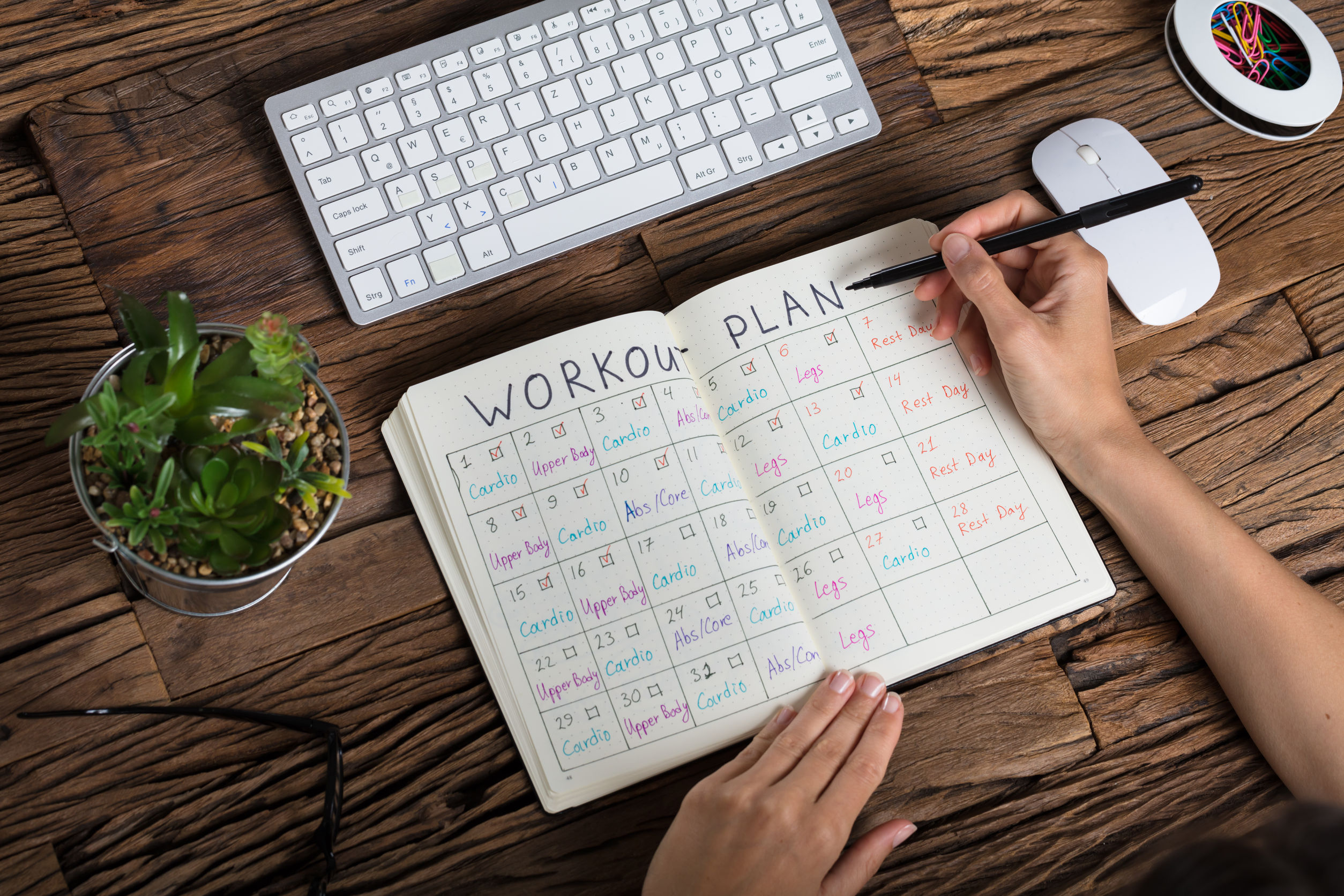Losing weight and getting fit can test your dedication, your discipline — and your patience. Seeing positive results from the changes you’ve made to your lifestyle takes time. Moreover, while adopting healthier eating habits may not require that you alter your schedule, improving your fitness will.
In a perfect world, we’d all spend at least an hour a day exercising. But let’s be honest. Between work, family obligations and other commitments, finding time to work out can be a real challenge. Still, that doesn’t change the fact that exercise is essential for your health. However, with a little flexibility and creativity, you can accept the challenge and get your workout in, even as you stick to your busy schedule.
The American Heart Association recommends adults get at least 150 minutes of moderately intense exercise each week. Break that number down, and you’ll find that it comes to just 30 minutes, five days a week. What’s more, that’s 30 minutes in total per day, not necessarily a single 30-minute block of exercise every day. Ten minutes here, 15 minutes there — it all adds up. When you look at it that way, staying committed to fitness can be simpler than anticipated.
Here are some tips for making this math work for you as you figure out what it will take to achieve your fitness goals.
Make it a priority.
You can’t add hours to your day, so when it comes down to it, you’ve got to commit to prioritizing your health. Take a look at your daily schedule. Is there anything you can eliminate or move around to make room for exercise? It may be time spent in front of the TV or browsing the web. Take 10 or 15 minutes of the time you normally spend passively consuming entertainment and dedicate it getting up and being active instead. Remember: Committing to exercise requires just as much effort as putting in your reps.
Be efficient.
Getting fit doesn’t require a trip to the gym or access to fancy equipment. There are plenty of exercises you can do anytime, whether you’re at home, in the office or on-the-go. HIIT (high-intensity interval training) and Tabata training are two great examples of heart-pumping workouts you can squeeze in when you’re short on time. Both HIIT and Tabata incorporate short bursts of high-intensity exercise that get your heart rate up and torch calories, followed by a brief period of rest.
Choose something you like.
Making time for exercise is much easier when you actually enjoy what you’re doing. If jogging bores you, choose something else. Maybe that’s calming yoga stretches, riding a bicycle or even dancing. There’s no stipulation on the type or “genre” of exercise you need to do to get fit and keep your heart healthy. The goal is to get your heart rate up and blood pumping. If you aren’t sure what you like, experiment with different types of exercise until you find one that makes you feel good.
Put it on your calendar.
Block out time — even if it’s 15 minutes here and 15 minutes there — for exercise on your daily to-do list. And stick to it as much as possible. When you schedule time for exercise, you’re more likely to get to it than if you just say, “I’ll do it when I can.” To keep the hustle and bustle of the day from getting in the way, set your alarm 30 minutes earlier and do your workout first thing in the morning. An early morning workout has plenty of benefits, including making you more alert and boosting your energy for the day ahead.
Remember, something is always better than nothing. If you choose the right program, frequent, short and speedy workouts can even be more beneficial for your health and fitness than trudging away an hour a day on the treadmill. When you begin to prioritize exercise as essential to your health, you’ll find it gets easier to find time to work out, no matter how full your schedule may be.





